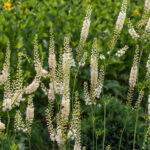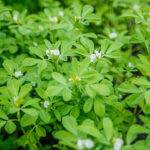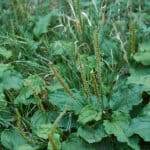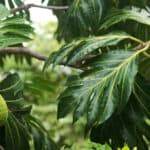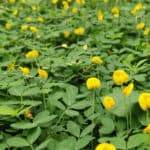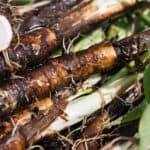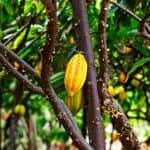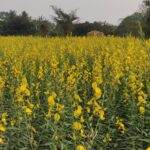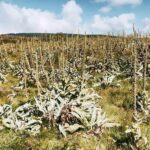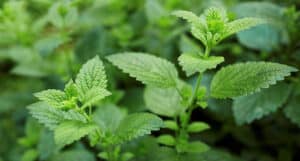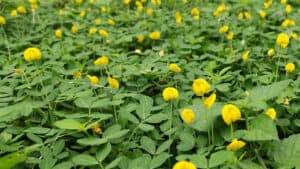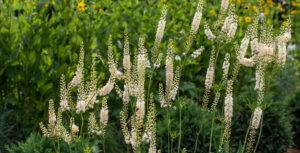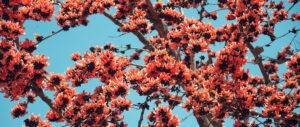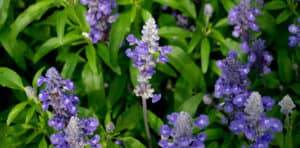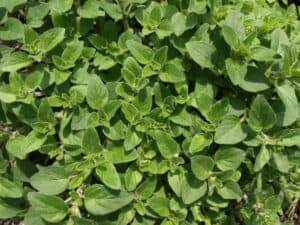Plant Overview
The beautiful tall leguminous shrub with its violet flowers waving in the wind, Glycyrrhiza glabra, or also known as Licorice, is yet another one of my favorite plants. Before human intervention, Glycyrrhiza glabra grew wildly in Southern Europe to North Africa and Western Asia. Now it is cultivated extensively in the Middle East for its prized roots containing a juicy sap which has a very sweet and aromatic flavor used in confectionery and the tobacco industry.
I have noticed that people either love licorice or they absolutely cannot stand it. I happen to be of the former. I absolutely love the flavors of this perennial shrub. Although, I must warn us all Licorice lovers, too much of this heavenly confections may bring increased blood pressure, irregular heart rhythm and also may not work well with some prescription drugs. Also I almost don’t want to believe it but, too much daily black licorice consumption over prolonged periods of time, in very very rare cases may cause death.
Luckily, that’s not the only reason I love this plant, or I’d probably not be around to tell you all about it.
As a part of the legume family, it hosts nitrogen fixing bacteria in its root nodules, thus increasing soil fertility in its immediate surroundings. As a perennial legume, with every leaf drop at the end of the season, it fertilizes the greater surroundings as the leaves are nitrogen rich as well. The flowers are gorgeous and if I may add… quite the eye candy. Bees, too, love them for their abundance.
Propagation & Planting
Seeds need light to germinate and a warm soil temperature. If you wanna plant from seeds, which ensures genetic variation, sprinkle the seeds on top of nutrient rich compost late spring when the soil is warm enough. An old way to know if the soil is warm enough is if you sit on the ground and if your butt isn’t cold, then its time to plant. If you slowly get the shivers, then maybe you can hold off a few days or even a week. If you just cant wait, and you gotta scratch that itch, then you can plant them in nursery pots inside till the weather warms up a bit. I like to soak them overnight in lukewarm water before planting them. This speeds up the germination process tenfold. Germination is not the highest, so its better to plant more seeds than not enough. You can always thin out the plants if they are too crowded in their nursery pots. Don’t get discouraged if you see nothing coming, it can take up to three weeks for them to germinate, even after the implementing the lukewarm soaking method.
Me being me, I like to propagate, even though it doesn’t directly support the whole evolution of biodiversity which nature so diligently sponsors us with by producing mass amounts of seeds. I’ll find some 3 to 4 year old adult plants and dig up the offshoots which readily root or already have roots. Alternatively, in the past I have mounded up the shrubs with earth in early autumn before the leaves fall (this time is important because when the leaves fall, all the sugars have already receded into the root stock from the branches to overwinter, so if you provide a moist and porous environment by the stems of the branches as the sugars recede down the stem, new roots will form at the buds). When I gently dig em up in spring there are masses of new roots all over the lateral branches. Snip em with the shears and voila, a new plant. You can quite quickly make a colony of Licorice plants this way. Yes yes, it is important to plant seeds too, so I do my best to plant out a few handfuls of seeds around my food forest borders every year.
Growth and Care
Glycyrrhiza glabra naturally grows along riverbanks. She likes deep, rich silty valleys with plenty of sand to drain out the excess water. She thrives best in full sun, but will compete for light in partial shade. This violet flowering beauty can grow up to a height of six feet and a width of about three.
She will suffer from powdery mildew if she doesn’t get enough airflow in between her branches. To keep this from happening I like to prune her once a year, your good ole’ chop-n-drop.
Back when my garden didn’t have so much biodiversity, I noticed spider-mites sometimes would infest her. All it takes though, is a few ladybugs to feed on them and problem fixed. I have also hear that slugs are a problem, although I have never had a problem with them. My region is full of limestone and I love to implement it everywhere in my garden. Crush it up sprinkle it at the bases of the trees, grind it up and mix with water to paint the trunks. Limestone raises the soil and plant pH so fungal infections (for example powdery mildew) are less likely to take hold, mycelia enjoy the higher pH biome and are more readily available to build associations, I haven’t tested this but, limestone burns open cuts, so with that theory, slugs (which are like a big open cut sliming around) run away from it.
Young plants are easy prey for the ferocious bunny rabbits who, like their fearsome deer and buck uncles and aunts, will completely devour any and all parts of the plant they can. I do not, have a solution for these guys, but to be honest… I am grateful that they come into our forest and feel at home, or in their kitchen. I’ll swallow a few dead plants for the support of yet another species. That’s part of the reason why I propagate so much. 🙂
Regardless, if Glycyrrhiza glabra gets gnawed to the base, she will recover slowly but surely. The rhizome network is extensive and very prolific.
Harvesting Licorice Root
As previously noted, the roots are very extensive and prolific, thus it should be noted that it is best if they are harvested every year after the plants have reached a mature age of around three or four years old. If left unchecked, they will take over territory and can become somewhat invasive. It is not extraordinary to find lateral roots ranging from thirteen feet to twenty six feet. Speaking of lateral roots, harvest those, and leave the deep tap root so the plant may continue growing. Harvest the yellowish brown thick long roots and leave the thin ones for next year.
Processing & Utilizing
The first time I tried fresh licorice root I was high up in the mountains of the Appalacias. We dug up some laterals and sucked and chewed on the dirty roots. There isn’t a more stimulating and refreshing feeling than sitting back, the sun caressing your face on a breezy autumn day, hair blowing in the wind and your mouth salivating, for this juicy root had enchanted us. Fresh, it tastes sweet, with a pinch o’ salt. The more we gnawed, the more the juices were released and it became sweeter which stimulated even more saliva production.
You can clean and dry the roots, which store extremely well. Teas are quite popular, though I like to suck on a stick as I am going about my day.
You can stick a stick of it in a jar of sugar or honey and the sugars will extract the essence, therefore creating licorice sugar! Useful for cake, as it gives it a hint but not overpowering the whole cake.
Conclusion
Overall, I should be careful not to consume too much. Indulging in this prized root should be a once-in-a-while thing. I love the plant, the flavor, and the bees love the flowers. She is an invaluable perennial nitrogen fixer and a hardy one at that. It took me a while to find a perennial nitrogen fixer which also doubled up for a human resource and I was so happy when I first found out it was none other than the sweet Glycyrrhiza glabra.















